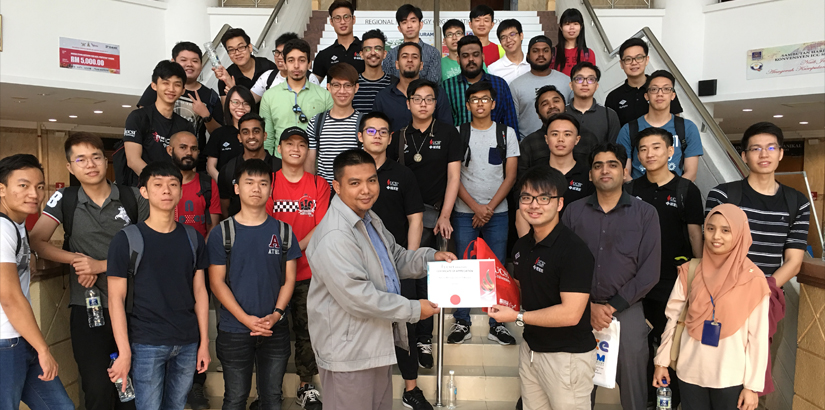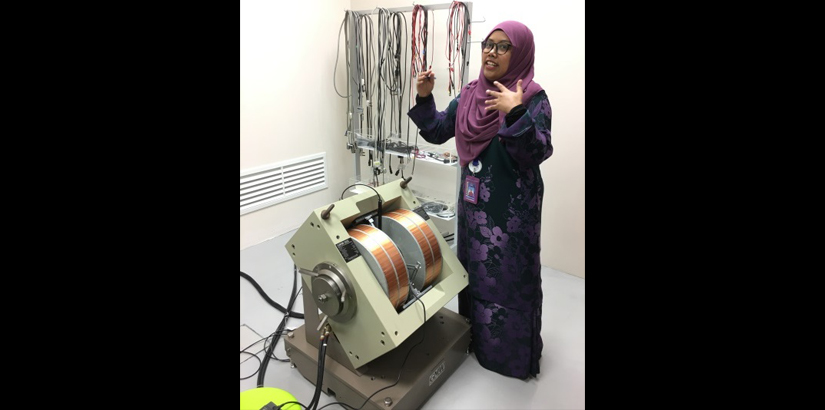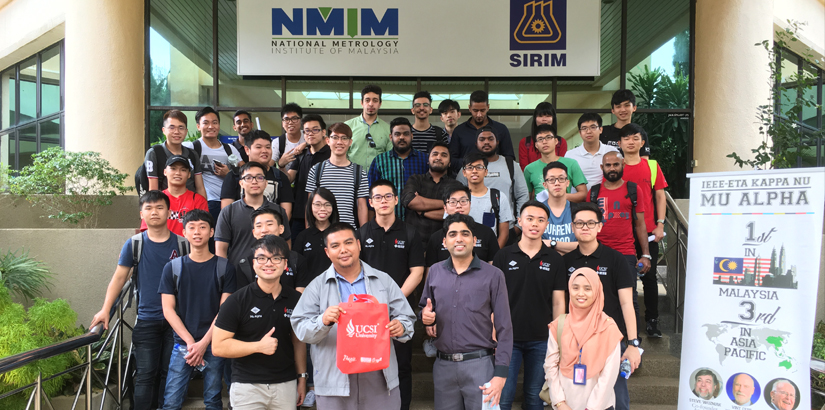2018
18 JulSite Visit to National Metrology Institute Malaysia
The objectives of the visit to the National Metrology Institute Malaysia (NMIM) were to expose Engineering students to the importance of metrology and standards associated as well as to expose students to the equipment and process used for measurement and calibration.
Upon arrival at NMIM, they watched a presentation on what NMIM is and its role in maintaining and enforcing the standards regarding metrology in Malaysia. They were briefed on the overall structure of the traceability of the calibrations performed by NMIM.
Measurement tools for various types of applications in the academia and business sectors all around Malaysia are being sent to NMIM for acquire a report of error analysis for the specific measurement tool. This is because NMIM has the highest traceability for calibration in Malaysia.
NMIM, subsequently, sends its measurement and calibration tools to its counterpart in Korea for calibration, as the golden rule in calibration is that only a tool with a higher precision and traceability should calibrate a tool of lower precision and traceability.
After the presentation, they were led to the dimensional lab, electromagnetic lab and electrical lab. NMIM has a few laboratories to measure each physical quantity, with different precisions to allow the calibrations of the tools in the lower precision labs to be done by the tools in the higher precision labs.
The dimensional lab performs calibration of measuring tools for length – the most common case being the conventional ruler. Thus, the environmental factors of the dimensional lab such as temperature and humidity have to be monitored and controlled consistently using sensors and negative feedback systems to ensure that these factors do not affect the accuracy of the measurements and calibrations performed in the lab.
They are also different kinds of standards to suit every application in the lab. These can be categorised into two – the block standard and the continuous standard – the block standard only allows end-to-end calibrations whereas the continuous standard allows calibrations of values that are not discrete.
Every calibration tool in the lab, of course, has its own precautionary measures that need to be observed. For example, the block standard should be handled only with the use of gloves.
In the electromagnetic lab, they were given a brief explanation on the different kinds of calibrations needed for DC and AC devices. Boxes of Gauss meters – the most common tool being sent to the lab for calibration – were seen placed on the tables in the lab.
AC calibration tools for electromagnetic applications are rather rare and the device in the lab to perform this kind of calibration is the only device in South-East Asia. There was a demonstration on how calibration is performed for the DC Gauss meters. In short, the Gauss meter probe from NMIM is placed in the magnetic field generated by the special machine together with the client’s probe to determine the difference in measurements, among other calculated parameters, which will be included later in the error analysis report sent back to the client.
In the electrical lab, they were given an explanation as to the various ways to perform calibration of the physical quantities for current, voltage and resistance. The procedures were rather similar to what is performed back in the university laboratory, only here it is with higher precision.
Safety precautions include wearing rubber shoes to separate the personnel from the ground to avoid electrocution. Shunts are also used when the measurement to be performed is beyond the range of the calibration tool in the lab. After this is done, sometimes the related values of current, voltage and/or resistance can then be evaluated using the widely known Ohm’s Law.
The visit helped students to gain in-depth knowledge on what NMIM does and to relate the electronic applications of calibration and measurement with their current studies at UCSI. The knowledge gained was practical and hands-on as students benefited from the demonstrations.









